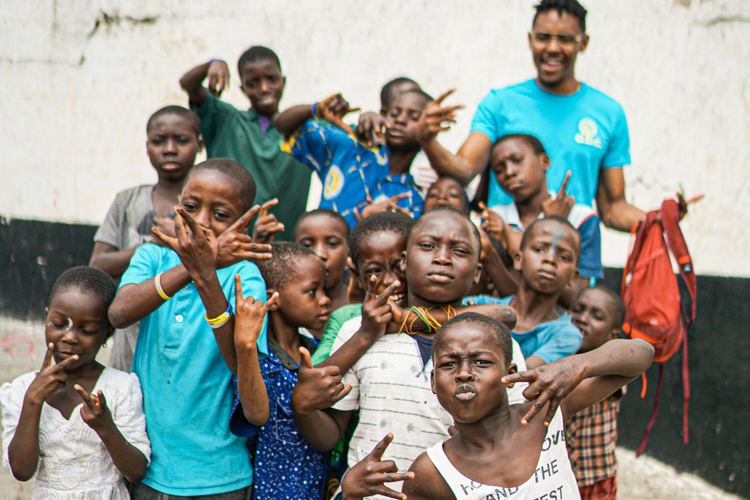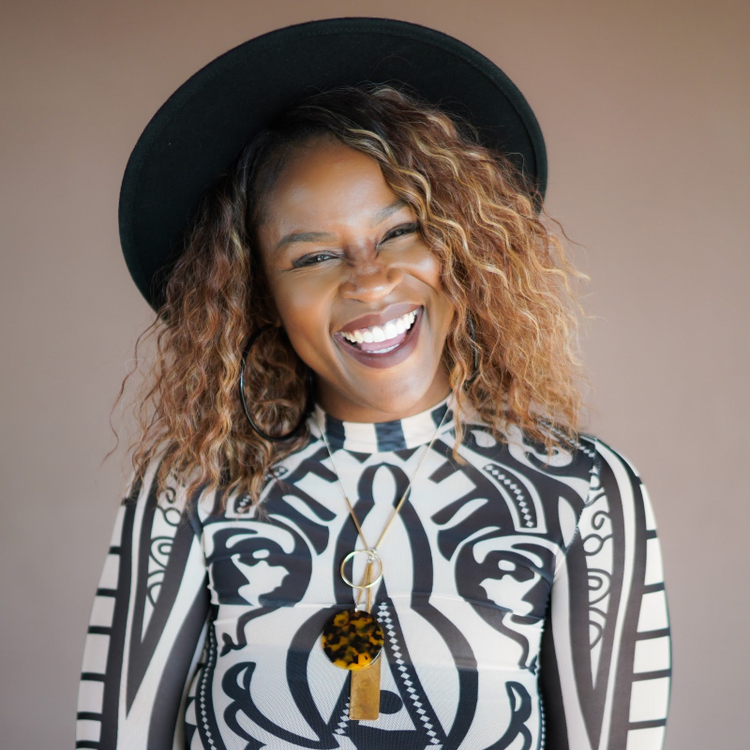Q&A: An interview with Lightroom Ambassador Gloria Atanmo

Of the ten talented voices within our 2020 Lightroom Ambassador program, we find our attention shifting to three. Right now, there are few voices louder or more influential than those of the Black creators among you. For us, they are our resident Lightroom Ambassadors: Aundre Larrow, Gloria Atanmo, and Tobi Shinobi. When words fail to uphold significance or convey meaning, Aundre Larrow bridges the gap with visceral photography that makes you feel, act, and devote yourself to something greater. In a time where information is in surplus and there always feels like there is more to do, Gloria Atanmo makes you feel equipped, confident, and capable in your journey to becoming an ally in the fight against racism. The stunning consistency and divine symmetry in Tobi Shinobi’s work takes you to another place entirely, which we find to be an especially intriguing quality as of late.
We took a moment to chat with our three incredible Black Lightroom Ambassadors about how their journeys began, how their creative styles have been affected by the pandemic and concurrent social justice movement, and then challenged them to highlight 5 Black photographers who are inspiring them right now. Read all about it in the coming weeks, and tune in to a series of IG Live conversations with Aundre and Tobi for more. First up in our three-part series is the effervescent Gloria Atanmo.
Gloria Atanmo

How did you embark on your photography journey?
Photography for me was always a way of expression and escape. I was the middle child of 6 kids to Nigerian parents, growing up with the typical immigrant story of struggle and disconnect from the rest of society.
As a kid, all you want to do is fit in. And when you realize that you’ll never have the money or skin color that being cool “required” you to have, you needed to find other ways to be invited to the cool table and with the cool kids.
Discovering photography in high school and investing in my first DSLR camera in college (using my book money to fund my first camera and Adobe programs), was my introduction into the art form we call photography.
At what point in your life did you establish your current photographic style?
I think I’ve always thrived in portraiture. I never found myself to be pretty until someone else took a photo of me. I loved being able to give that same feeling and gift of beauty to others. So I started with portraits, worked my way into corporate events, and then eventually to weddings, which was short lived, as most wedding photographers will chuckle at because they know the stress involved.
My style is always evolving, but I do enjoy photographing people most.
How has the pandemic and concurrent social justice movement affected the way you work and create?
Most of my photography in recent years was for brand clients who flew me to different destinations around the world for me to photograph. In the midst of the pandemic and racial injustices, I found myself channeling my art through graphics. Putting my camera behind me and just using words to express myself for a while. I couldn’t show my face for weeks because it was such an emotionally-charged time, but I feel like you need to allow yourself creative breaks, especially when you’ve been doing something for so many years.
Has your style or subject focus changed at all?
I always try to step up and talk about what I think the world needs most: education, love, compassion, entertainment, etc. It’s a tough position sometimes, because when you have a platform, everyone has an opinion about how you should use it. I had to disconnect from the noise for a while and just speak on whatever I felt called to speak on. I think my subject focus is always evolving, based on what I think is needed in the world, or the message on my heart to share.
How would you describe your creative journey over the course of 2020?
2020 put all of us through the wringer in different ways, but I’m really happy with how I allowed myself to feel and heal whatever emotions surfaced. In the past, my constant jet-setting lifestyle never allowed myself the time to slow down and think about how I feel.
I had to feel everything that happened this year, and it was a painful experience, but I’m better now because of it. It allowed me to let my creative juices flow deeper and in a different rhythm. Moving forward, I’m excited to just go back to the basics of sharing what’s on my heart and worrying less about the superficial curation we often get consumed with.
Can you share your 5 favorite Black photographers to follow right now? What sets these 5 apart from other creatives within your realm?
- Asiyami Gold — More than a photographer, she knows how to create art out of any ordinary moment. I admire how much she’s pioneered the movement of bringing luxury travel to the industry at a time when it was very white and male-dominated.
- Karl Shakur — As a fellow traveler, Karl’s work makes me feel like I’m in a movie. He has a knack and eye for aesthetics, mixing landscape photography with portraiture. It’s truly incredible.
- Rich Allela — A Kenyan photographer best known for portraits around his home country, he does a great job of also mixing art into his work by using colorful props and photoshop.
- Elton Anderson Jr — You’ve likely seen Elton’s work on a magazine or book cover, because this man has photographed some of the most well-known people in “Black Hollywood” and I love his simple, yet stunning, eye for photography.
- Holly-Marie Cato — Holly has been using photography to document people and their stories for years. Her work stands out as both captivating and necessary as she often puts her lens at the forefront of important issues around the world.
For more relevant content from Gloria, follow her on Instagram here.